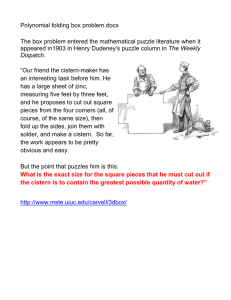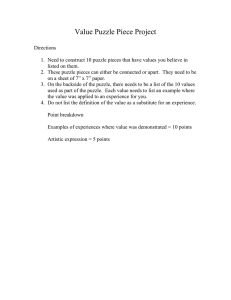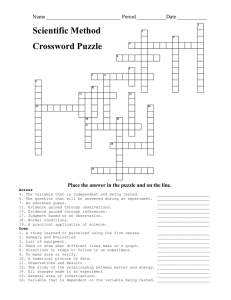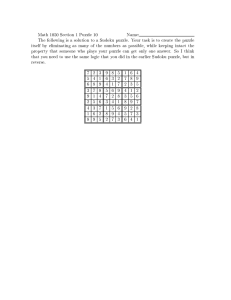New Client Puzzle Outsourcing Techniques for DoS Resistance
advertisement
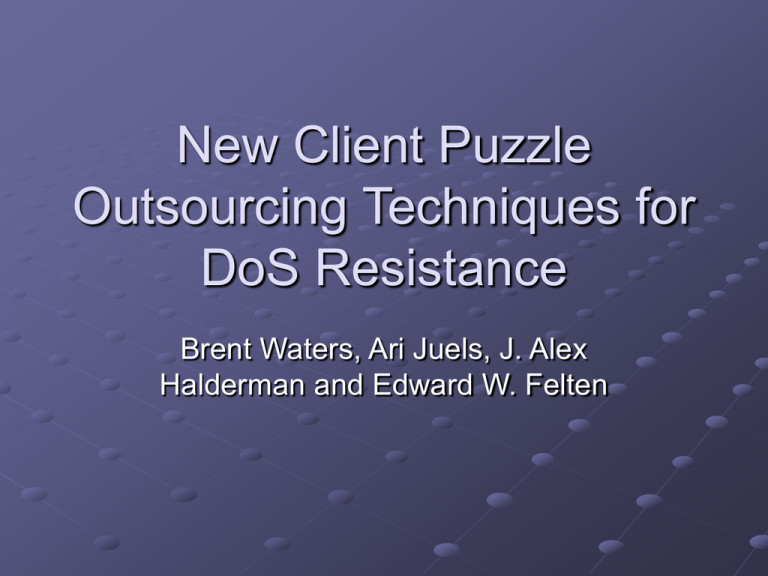
New Client Puzzle Outsourcing Techniques for DoS Resistance Brent Waters, Ari Juels, J. Alex Halderman and Edward W. Felten Motivation Client puzzle mechanism can become the target of DoS attacks Servers have to validate solutions which require resources Puzzles must be solved online User time is more important than CPU time Properties of the Proposed Solution The creation of puzzles is outsourced to a secure entity, the bastion Creates puzzle with no regard to which server is going to use them Verifying puzzle solutions is a table lookup Clients can solve puzzles offline ahead of time A puzzle solution gives access to a virtual channel for a short time period Puzzle Properties Unique puzzle solutions Each puzzle has a unique solution Per-channel puzzle distribution Puzzles are unique per each (server, channel, time period) triplet Per-channel puzzle solution If a client has a solution for one channel, he can calculate a solution for another server with the same channel easily Pub: Y1 Pub: Y2 Pub: Y3 Server 1 Virtual Channels Priv: X1 c,t = gc,tX1 Server 1: c,t = Y1f’(a) Server 2: c,t = Y2f’(a) Server 2 Virtual Channels Priv: X2 c,t = gc,tX2 Server 3: c,t = Y3f’(a) Server 3 Virtual Channels Priv: X3 c,t = gc,tX3 System Description Solutions for puzzles are only valid for the time period t. (Order of minutes) Client: During Ti, download puzzles for Ti+1 and solve Check to see if server has a public key If so append puzzle solutions to messages Server: During Ti, download and solve all puzzles for Ti+1 If server is under attack only accept requests that have valid tokens Checking puzzle solution is a simple table lookup Communication Client uses option field in TCP SYN to relay the token Only the first 48 bits of the solution is used The server determines the virtual channel Server limits new connection per channel Public key: Y Puzzle index: c Token: c,t Token: c,t+1 Virtual Channels c Resilience Against Attacks 2.1 GHz Pentium can process 1024-bit DH key in 3.7ms. With 5% recourse it can populate tokens for 16,000 virtual channels. If s=2, every client can solve at least one puzzle and half of them can solve at least two If attacker has 50 zombie machines, it can create 2*50*2 = 200 puzzle solutions occupying 1.25% of the channels Probability of a benign user not getting a normal channel <.625% Experiment Puzzle checking (table lookup) is implemented at kernel lvl After the routing and before the packet reaches higher level protocols like TCP Simulate conventional puzzles by replacing the lookup code with a SHA-1 hash computation Simulate syncookies by allowing Linux to send an ACK packet back
